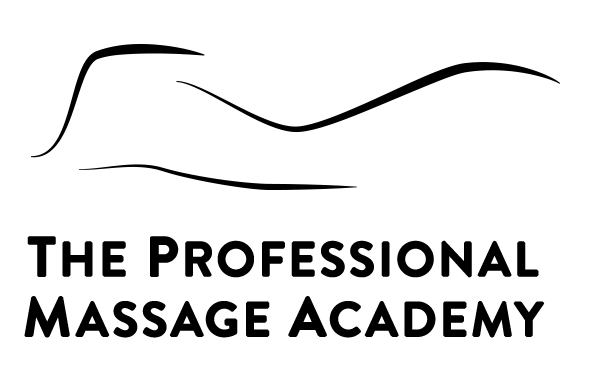Graduating from massage therapy school marks the beginning, not the end, of your professional journey. While your foundational training has equipped you with essential skills in Swedish massage, deep tissue work, and basic anatomy, the world of massage therapy offers a vast landscape of specialized techniques and advanced modalities waiting to be explored. The key to long-term success and career satisfaction lies in continuous learning and strategic skill development.
Building Your Foundation First
Before diving into advanced techniques, it’s crucial to master your foundational skills. Spend your first six months to a year focusing on perfecting your basic Swedish and deep tissue techniques, developing your palpation skills, and building confidence with client communication. This period isn’t just about repetition—it’s about developing the intuitive understanding of tissue response and body mechanics that will serve as the foundation for all advanced work.
Many experienced practitioners emphasize that rushing into advanced techniques without a solid foundation can actually hinder your development.
Exploring Advanced Modalities
Once you’ve established your foundation, the world of specialized massage opens up with exciting possibilities. Here are some advanced modalities that can significantly enhance your practice and career prospects:
Myofascial Release focuses on the fascial system that surrounds and connects all muscles and organs. This technique requires a deep understanding of fascial anatomy and the ability to feel subtle tissue changes. It’s particularly valuable for clients with chronic pain patterns and movement restrictions.
Trigger Point Therapy involves identifying and treating specific points of muscle tension that refer pain to other areas. This modality requires advanced palpation skills and detailed knowledge of referral patterns, making it highly effective for addressing specific pain complaints.
Neuromuscular Therapy combines detailed anatomical knowledge with specific techniques to address nerve entrapment and muscle imbalances. This advanced approach often appeals to therapists interested in working with injury rehabilitation and chronic conditions.
Manual Lymphatic Drainage is a gentle but highly technical modality that requires specialized training in the lymphatic system. With growing awareness of lymphatic health, this skill is increasingly in demand, particularly in medical and wellness settings.
Strategic Timing for Advanced Training
The timing of when to pursue advanced training is crucial for both your professional development and financial success. Generally, it’s advisable to wait at least six months after graduation before beginning specialized training. This allows you to identify which types of clients and conditions you’re naturally drawn to work with, helping you choose modalities that align with your interests and career goals.
Consider these factors when planning your advanced education:
Client Demand: Pay attention to what your clients are asking for and what conditions you encounter most frequently. If you’re seeing many athletes, sports massage or orthopedic techniques might be valuable. If you work with stressed professionals, craniosacral or relaxation-focused modalities could be beneficial.
Employment Opportunities: Research what advanced skills are valued in your local market. Some spas prioritize hot stone or prenatal massage, while medical practices might value orthopedic or lymphatic drainage skills.
Personal Interest: Choose modalities that genuinely interest you. Your enthusiasm for a technique will translate into better outcomes for clients and greater job satisfaction for you.
Financial Investment: Advanced training can be expensive, so prioritize based on what will provide the best return on investment for your specific career goals.
Developing Your Unique Approach
As you acquire new skills, you’ll begin to develop your own therapeutic approach that combines various techniques in ways that feel natural to you. This integration process is deeply personal and takes time to evolve. Some therapists become specialists in particular modalities, while others develop broad skill sets that allow them to adapt to diverse client needs.
The key is to remain curious and open to learning while being selective about which techniques you pursue. Quality trumps quantity when it comes to advanced skills—it’s better to truly master a few modalities than to have superficial knowledge of many.
Building Client Trust with Advanced Work
When introducing advanced techniques to your practice, transparency and communication become even more important. Clients need to understand what you’re doing and why, especially with techniques that might feel different from traditional massage. Take time to explain the approach, obtain proper consent, and check in regularly during sessions.
Start by introducing advanced techniques to clients who already trust you and are open to trying new approaches. Their positive experiences and referrals will help you build confidence and reputation in your new skills.
Planning Your Professional Development Path
Consider creating a professional development plan that outlines your learning goals for the next few years. This might include:
- Immediate goals (next 6-12 months): Master foundational skills, identify areas of interest
- Short-term goals (1-2 years): Complete training in 1-2 complementary modalities
- Medium-term goals (3-5 years): Develop specialization or niche expertise
- Long-term goals (5+ years): Consider advanced certifications, teaching opportunities, or specialized practice development
Remember that professional development is a marathon, not a sprint. The massage therapy field rewards practitioners who commit to lifelong learning and continuous improvement.
The Investment in Your Future
Advanced training represents an investment in your professional future, your earning potential, and your ability to help clients achieve their wellness goals. While the initial cost and time commitment can seem daunting, skilled massage therapists with specialized training often command higher rates, attract more referrals, and experience greater job satisfaction.
The massage therapy profession offers incredible opportunities for growth and specialization. By approaching advanced training strategically, building on your foundational skills, and remaining committed to excellence, you can create a rewarding career that continues to challenge and inspire you for years to come.
Your journey as a massage therapist is just beginning. With dedication, strategic planning, and continued learning, you can develop the advanced skills that will set you apart in this competitive field and allow you to make a meaningful difference in your clients’ lives.


Recent Comments